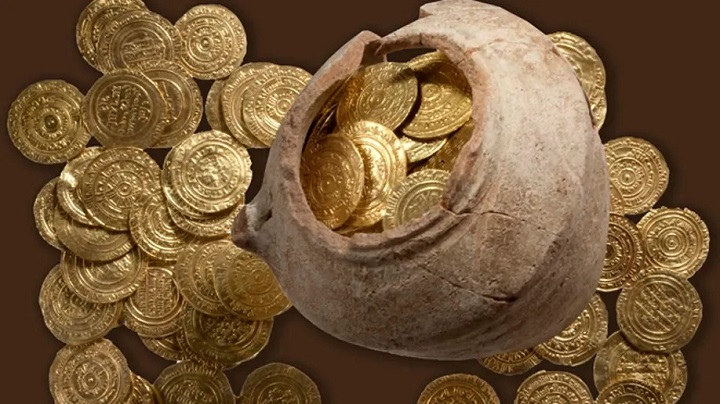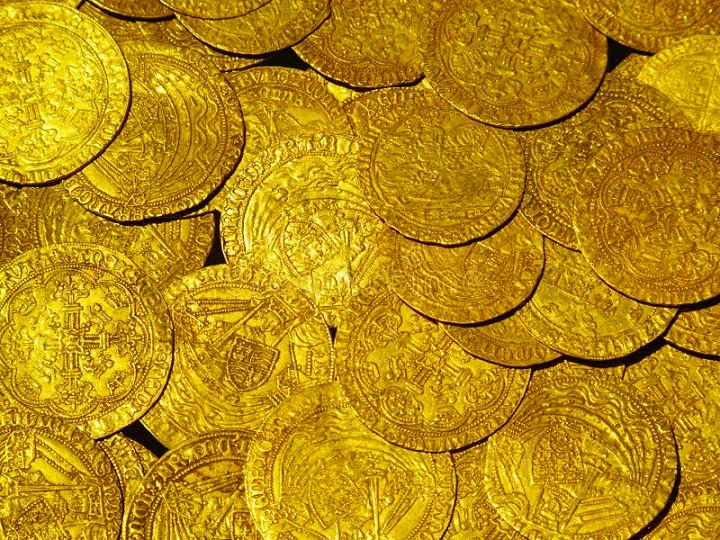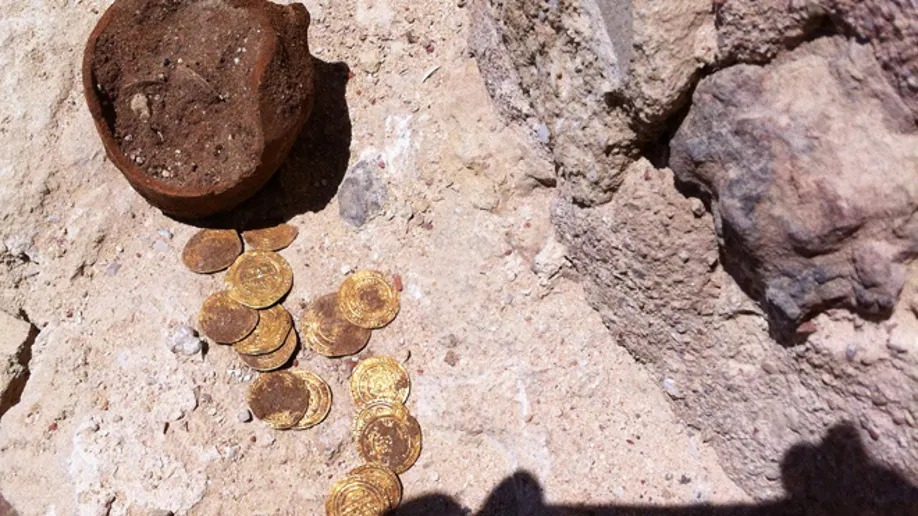Israeli archaeologists have found buried treasure: more than 100 gold dinar coins from the time of the Crusades, bearing the names and legends of local sultans, blessings and more — and worth as much as $500,000.
The joint team from Tel Aviv University and Israel’s Nature and Parks Authority were working at Apollonia National Park, an ancient Roman settlement on the coast used by the Crusaders between 1241 and 1265, when they literally found a pot of gold.
“All in all, we found some 108 dinals and quarter dinars, which makes it one of the largest gold coin hoards discovered in a medieval site in the land of Israel,” Prof. Oren Tal, chairman of Tel Aviv University’s Department of Archaeology, told FoxNews.com.

Image: A stash of gold coins was found buried at Apllonia National Park, hidden away by Crusaders in the mid 1200s, archaeologists said. (Matti Yohananof)
The Christian order of the Knights Hospitaller had taken up residence in the castle in Apollonia; it was one of their most important fortresses in the area. The hoard of coins was buried on the eve of the site’s downfall after a long siege by a large and well-prepared Muslim army.
Since its destruction in late April 1265 it was never resettled. As the destruction of the well-fortified castle grew near, one of the Crusader’s leaders sought to hide his stash in a potsherd, possibly to retrieve it later on.

“It was in a small juglet, and it was partly broken. The idea was to put something broken in the ground and fill it with sand, in order to hide the gold coins within,” Tal told FoxNews.com. “If by chance somebody were to find the juglet, he won’t excavate it, he won’t look inside it to find the gold coins.”
“Once we started to sift it, the gold came out.”
The hoard of coins themselves — found on June 21, 2012, by Mati Johananoff, a student of TAU Department of Archaeology — date to the times of the Fatimid empire, which dominated northern Africa and parts of the Middle East at the time. Tal estimates their date to the 10th and 11th centuries, although they were circulated in the 13th century.

Image: A stash of gold coins was found buried at Apllonia National Park, hidden away by Crusaders in the mid 1200s, archaeologists said. (Matti Yohananof)
“Some were minted some 250 to 300 years before they were used by the Hospitaller knights,” he explained. The coins are covered in icons and inscriptions: the names and legends of local sultans, Tal said, as well as blessings.
Some also bear a date, and even a mint mark, a code that indicates where it was minted, whether Alexandria, Tripoli, or another ancient mint.
“Fatimid coins are very difficult to study because they are so informative,” Tal told FoxNews.com. “The legends are very long, the letters are sometimes difficult to decipher.”
The coins are clearly of great value, both historically and intrinsically, though putting a price tag on them is no easy feat: Value is a flexible thing, Tal explained. Israeli newspaper Haaretz pegged the find at $100,000. Tal noted that Fatimid dinars sell for $3,000 to $5,000 apiece, meaning the stash could be worth closer to half a million.

Once his team has finished deciphering the coins and decoding their inscriptions, they will be transferred to a museum. But with such a valuable find, there’s already a quarrel between two archaeologically oriented museums over which will host them.
Tal said the Israel Museum in Jerusalem is in the running, as is the Eretz (or Land of Israel) Museum in Tel Aviv.
“Both want the coins on display. It’s not for us to decide,” Tal said.





